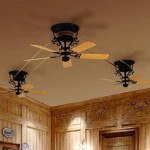What To Do With Old Ceiling Tiles In Atlanta, Georgia, USA
Ceiling tiles, a common feature in commercial and residential buildings throughout Atlanta, Georgia, and the United States, often require replacement due to age, water damage, or renovation projects. Disposing of these materials responsibly and in accordance with local regulations is essential for environmental sustainability and compliance. This article will explore various options for managing old ceiling tiles in the Atlanta metropolitan area, covering disposal, recycling, and potential reuse strategies.
The composition of ceiling tiles can vary, influencing the appropriate disposal method. Older tiles may contain asbestos, a hazardous material that requires specialized handling. Modern tiles are generally made from mineral fiber, fiberglass, or other composite materials. Identifying the material composition is a crucial first step in determining the best course of action for disposal or recycling.
Identifying the Material Composition and Potential Hazards
Before handling any old ceiling tiles, it is imperative to determine their composition, especially if the building was constructed before the 1980s. Asbestos, a naturally occurring mineral fiber, was widely used in building materials, including ceiling tiles, for its fire-resistant and insulating properties. However, asbestos fibers, when inhaled, can cause serious health problems, including lung cancer, mesothelioma, and asbestosis.
If there is any suspicion that the ceiling tiles contain asbestos, it is critical to refrain from disturbing the tiles. Disturbance can release asbestos fibers into the air, posing a health risk. A qualified asbestos testing professional should be contacted to collect samples and analyze them in a certified laboratory. In Atlanta, several environmental consulting firms specialize in asbestos testing and identification.
If the tiles are confirmed to contain asbestos, removal must be performed by a licensed asbestos abatement contractor. These contractors have the specialized training, equipment, and permits necessary to safely remove and dispose of asbestos-containing materials in accordance with federal, state, and local regulations. Improper removal can lead to significant fines and legal liabilities.
For newer buildings, ceiling tiles are typically made from mineral fiber, fiberglass, or other composite materials. These materials are generally less hazardous than asbestos, but proper handling and disposal are still important. Mineral fiber tiles are often made from recycled paper and other natural materials. Fiberglass tiles consist of glass fibers bonded together with a resin. Composite tiles may contain a combination of materials, including gypsum, clay, and recycled content. The manufacturer's information, if available, can provide details on the tile's composition.
Disposal Options in Atlanta
Once the material composition of the ceiling tiles has been identified and any asbestos concerns have been addressed, various disposal options can be considered. The most common disposal method is landfill disposal, but recycling and reuse are more environmentally friendly alternatives.
Landfill disposal involves transporting the old ceiling tiles to a designated landfill. In the Atlanta area, several landfills accept construction and demolition (C&D) debris, including ceiling tiles. However, it is important to check with the specific landfill to confirm its acceptance criteria and any restrictions on materials. Some landfills may require special handling or pre-treatment for certain types of ceiling tiles.
Before disposing of ceiling tiles in a landfill, consider alternative options that can reduce waste and conserve resources. Recycling is a viable option for some types of ceiling tiles, particularly those made from mineral fiber or recycled content. Some manufacturers offer take-back programs where they will accept used ceiling tiles for recycling into new products. These programs typically require the tiles to be clean and free of contaminants.
In addition to manufacturer take-back programs, some recycling facilities in the Atlanta area may accept ceiling tiles. It is important to contact these facilities in advance to inquire about their acceptance criteria and any processing fees. Recycling ceiling tiles can help reduce the demand for virgin materials and conserve landfill space.
Another disposal option is donation. While perhaps not suitable for significantly damaged tiles, if the replaced tiles are in largely good condition, consider donating them to organizations that reuse building materials. These organizations may be able to repurpose the tiles for other projects, extending their useful life.
Recycling Programs and Reuse Strategies
Recycling ceiling tiles offers significant environmental benefits, including reducing landfill waste, conserving natural resources, and lowering energy consumption. Several programs and strategies can facilitate the recycling of ceiling tiles in the Atlanta area.
Manufacturer Take-Back Programs: As mentioned earlier, some ceiling tile manufacturers offer take-back programs where they will accept used tiles for recycling. These programs typically involve shipping the tiles back to the manufacturer's facility, where they are processed and incorporated into new products. Armstrong Ceiling Solutions, for example, has a long-standing recycling program for its mineral fiber ceiling tiles. Contacting the manufacturer of the ceiling tiles is the first step in exploring this option.
Construction and Demolition (C&D) Recycling Facilities: Several C&D recycling facilities in the Atlanta area accept a variety of building materials, including ceiling tiles. These facilities sort and process the materials to recover recyclable components. While not all C&D facilities accept ceiling tiles, it is worth researching local options to determine if they offer this service. Check with local waste management companies for recommendations.
Reuse Strategies: While recycling is a favorable option, direct reuse of ceiling tiles can be even more advantageous. If the ceiling tiles are in good condition, they can be reused in other areas of the building or donated to organizations that can repurpose them. Consider using them in less visible areas, such as storage rooms or basements. Creative reuse options include using the tiles for soundproofing in home studios or workshops or as a base for art projects.
Furthermore, local organizations, such as Habitat for Humanity ReStores, often accept donations of surplus building materials, including ceiling tiles. Donating usable tiles to these organizations can divert them from landfills and make them available to individuals and families who need affordable building supplies. Before donating, verify that the tiles meet the organization's acceptance criteria and are in a condition suitable for reuse.
Ultimately, the best approach to managing old ceiling tiles in Atlanta involves a combination of careful assessment, responsible disposal, and proactive recycling or reuse efforts. By understanding the material composition of the tiles, exploring available disposal options, and embracing sustainable practices, property owners can minimize their environmental impact and contribute to a more sustainable future for the city.
Careful documentation throughout the removal and disposal process is essential. Maintain records of any asbestos testing, abatement work, and disposal receipts. This documentation can be valuable for future building maintenance or renovation projects and can help demonstrate compliance with environmental regulations.
Staying informed about changes in local, state, and federal regulations regarding waste management and recycling is crucial. Regulations can change over time, so it is important to stay updated on the latest requirements to ensure compliance.

Replacing Drop Ceiling Tiles

Replacing Drop Ceiling Tiles

Replacing Drop Ceiling Tiles

Replacing Drop Ceiling Tiles

Replacing Drop Ceiling Tiles

Replacing Drop Ceiling Tiles

What Do Asbestos Ceiling Tiles Look Like Removal Pro

What Do Asbestos Ceiling Tiles Look Like Removal Pro

What Do Asbestos Ceiling Tiles Look Like Removal Pro

Cover Popcorn Ceiling New Tiles Decorative
Related Posts








